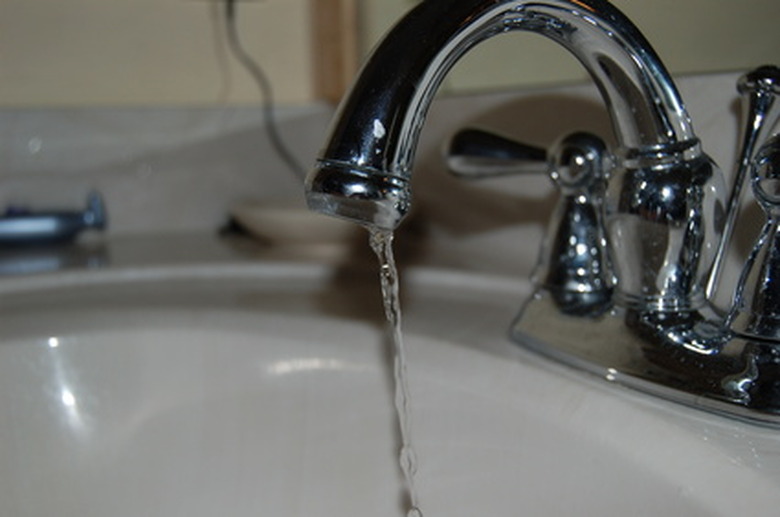How To Calculate Flow Rates
Finding the flow rate of water from a spout, such as a garden spigot or bathroom faucet, is a simple exercise that requires nothing more than a bucket and a timer. Calculating flow rate in an open trough, such as a gutter or riverbed, is a bit more complicated, and calculating flow rate of a liquid inside a closed pipe is even more complex.
The flow rate formula, in general, is
\(Q=Av\)
where Q is the flow rate, A is the cross-sectional area at a point in the path of the flow and v is the velocity of the liquid at that point. In some situations, such as that of water flowing in a riverbed, calculating A is difficult, and the best you can do is an approximation. In others, such as that of a fluid flowing in a closed pipe, it's difficult to measure v, but you don't have to. If you can measure the fluid pressure, you can use Poiseuille's Law.
Calculating Flow Rate Through an Orifice
Calculating Flow Rate Through an Orifice
If you need to know the flow rate through an orifice, such as a spigot or a drip emitter, all you have to do is allow a certain volume to accumulate in a container and measure how long it takes to accumulate. For example, you can measure flow rate from a spigot by allowing water to fill a 5-gallon bucket and recording the time. Divide 5 by the time it took to get the number of gallons per unit time. If you measure time in minutes, you'll get the result in gallons per minute.
To measure flow rate from a small orifice, such as that of a drip emitter, you'll need a much smaller container, such as a quart jar, and a longer unit of time, but the principle is the same. Drip emitters are usually rated in the number of gallons per hour they emit. An emitter that puts out 1 gallon per hour will fill a quart jar in 15 minutes.
Using the Flow Rate Formula
Using the Flow Rate Formula
If you can see the fluid flowing, you can measure its velocity, and that means all you need is the area through which the fluid is flowing to calculate the flow rate using the formula Q = A × v.
If the fluid is flowing through an orifice or a clear tube, one way to measure velocity is to introduce dye as a marker and time how long it takes the dye to pass two points. After measuring the radius of the tube or orifice, you can calculate area using πr2, then use v × A to calculate flow rate.
For flow through natural features, such as a riverbed, you have to approximate the area. Assume the deepest part of the river to be the radius of a semi-cylindrical trough. Calculate the cross-sectional area using πr2, then take half of that and use that for A in the equation Q = v × A to get an approximate flow rate.
Flow Rate Calculation Using Pressure
Flow Rate Calculation Using Pressure
When a fluid is flowing through a closed pipe, you can't see it, so you can't measure its velocity. However, if you can measure the fluid pressure – which is usually easy to do, using a pressure gauge – you can use Poiseuille's Law to calculate flow rate. According to Poiseuille's Law, the flow rate Q varies directly with the pressure difference Δp between the ends of the pipe and the fourth power of the radius of the pipe r4, and it varies inversely with the pipe length L. The equation is:
\(Q = \frac{π\Delta pr^4}{8μL}\)
where µ is the viscosity of the fluid.
Poiseuille's Law assumes laminar (non-turbulent) flow, which is a safe assumption at low pressures and small pipe diameters.
Cite This Article
MLA
Deziel, Chris. "How To Calculate Flow Rates" sciencing.com, https://www.sciencing.com/calculate-flow-rates-6199676/. 21 December 2020.
APA
Deziel, Chris. (2020, December 21). How To Calculate Flow Rates. sciencing.com. Retrieved from https://www.sciencing.com/calculate-flow-rates-6199676/
Chicago
Deziel, Chris. How To Calculate Flow Rates last modified August 30, 2022. https://www.sciencing.com/calculate-flow-rates-6199676/
